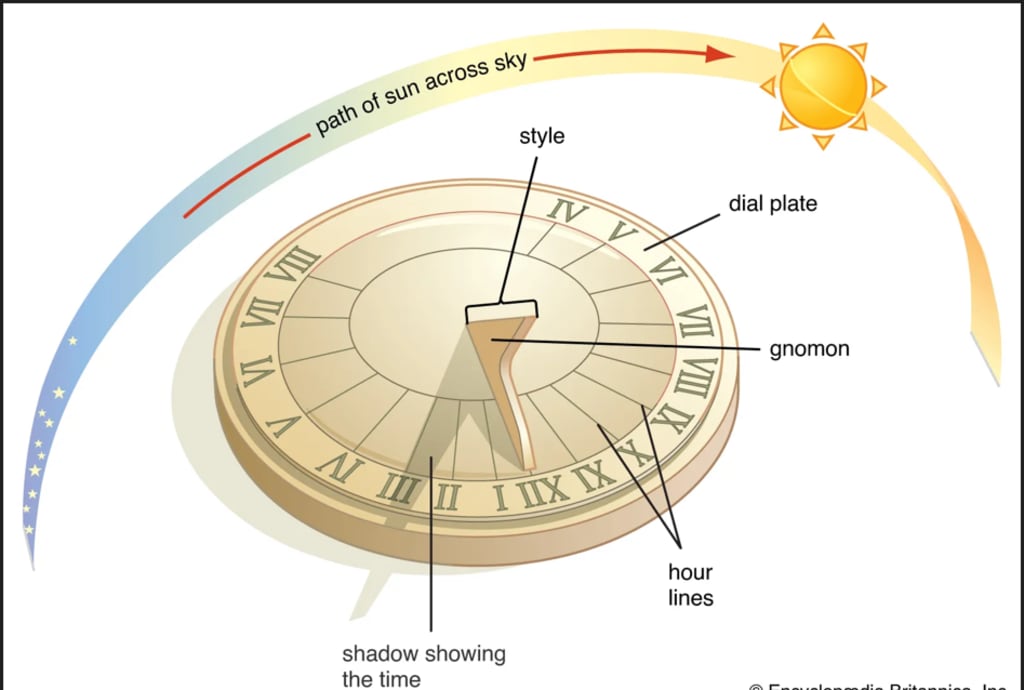World's OLDEST known sundial
Egyptian Sun Dials: Devices used to measure time by the position of the sun, showcasing advanced knowledge of astronomy and timekeeping.

The world's oldest known sundial is a remarkable artifact that provides a window into the early understanding of timekeeping and astronomy. This ancient instrument, discovered in the Valley of the Kings in Egypt, dates back to the 13th century BCE during the reign of Pharaoh Seti I. The sundial not only highlights the ingenuity of ancient Egyptian scientists and craftsmen but also underscores the importance of time measurement in their society. Exploring the origins, construction, and significance of this ancient sundial offers a fascinating glimpse into the technological and cultural achievements of one of history's most advanced civilizations.
The sundial, a simple yet sophisticated device, measures time by casting a shadow on a marked surface. The position of the shadow indicates the hour of the day. The oldest known sundial, discovered in 2013 by a team of archaeologists from the University of Basel, was found in the Valley of the Kings, a burial ground for Egyptian pharaohs and nobles. This artifact is a stone slab about 16 centimeters wide with a semicircular shape. It features a central hole where a peg or gnomon would have been placed to cast a shadow.
The design of the sundial is elegantly simple. The semicircular surface is divided into twelve segments, representing the hours of the day. Each segment is marked with lines and dots, which would have been used to track the movement of the sun's shadow. The gnomon, when positioned correctly, would cast a shadow across these markings, allowing the user to determine the time with reasonable accuracy.
The discovery of this sundial is significant for several reasons. Firstly, it predates other known sundials by several centuries, providing the earliest physical evidence of timekeeping in ancient Egypt. Secondly, it highlights the Egyptians' advanced understanding of astronomy and geometry, as the accurate division of the sundial's face required precise calculations and knowledge of the sun's movement across the sky.
The use of sundials in ancient Egypt was closely linked to both practical and ceremonial purposes. Timekeeping was essential for the coordination of daily activities, agricultural practices, and religious rituals. The Egyptians' agricultural calendar relied heavily on the seasons and the annual flooding of the Nile River, making accurate time measurement crucial for planting and harvesting crops. Additionally, religious ceremonies often required precise timing, aligning with the movement of celestial bodies to honor the gods.
The construction of the world's oldest known sundial involved skilled craftsmanship and a deep understanding of materials. The stone used for the sundial was likely chosen for its durability and smooth surface, which allowed for clear and precise markings. The creation of the gnomon and the carving of the hour lines required a high degree of accuracy to ensure that the sundial functioned correctly.
The significance of this sundial extends beyond its practical use. It symbolizes the Egyptians' quest for knowledge and their ability to harness natural phenomena to enhance their daily lives. The sundial reflects a society that valued scientific inquiry and technological innovation, attributes that contributed to the enduring legacy of ancient Egypt.
The discovery of the oldest known sundial also provides valuable insights into the broader history of timekeeping. It represents an early step in the long journey of human efforts to measure and understand time, a journey that has seen the development of increasingly sophisticated devices and methods. The principles demonstrated by this ancient sundial laid the groundwork for subsequent advancements in horology, the science of timekeeping.
Today, the oldest known sundial is a celebrated artifact, studied by archaeologists, historians, and scientists to uncover more about its origins and use. It serves as a tangible connection to the past, offering a glimpse into the daily lives and intellectual achievements of the ancient Egyptians. Museums and exhibitions showcasing this sundial and other timekeeping devices help modern audiences appreciate the ingenuity and resourcefulness of early civilizations.
As researchers continue to study this ancient sundial, more details are expected to emerge about its construction, usage, and cultural significance. This ongoing research will likely reveal further aspects of ancient Egyptian society and their innovative approaches to science and technology. By delving deeper into these findings, historians hope to gain a more comprehensive understanding of how early timekeeping devices influenced subsequent developments in astronomy and horology.
About the Creator
Marveline Merab
“History never repeats itself. Man always does.”
― Voltaire
Enjoyed the story? Support the Creator.
Subscribe for free to receive all their stories in your feed. You could also pledge your support or give them a one-off tip, letting them know you appreciate their work.






Comments
There are no comments for this story
Be the first to respond and start the conversation.